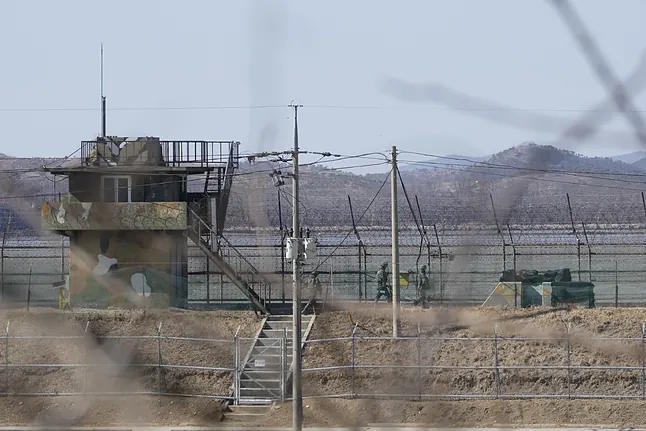On Tuesday, at 5:00 p.m. on the Korean Peninsula, a dozen North Korean soldiers crossed the militarized border into South Korea. In response, the South Korean army fired several warning shots. This was stated in a statement issued by Seoul's military authorities after the latest incident with Kim Jong-un's regime.
Both countries are separated by the last vestige of the Cold War, the so-called Demilitarized Zone (DMZ), which stretches along 250 kilometers and serves as a buffer barrier between two enemy armies that speak the same language. Located 50 kilometers north of Seoul and 200 kilometers south of Pyongyang, the DMZ has long been a deadly place for North Korean dissidents and a meeting point for failed peace agreements.
The DMZ functions as a de facto border next to the so-called 38th parallel, the dividing line of latitude located 38 degrees north of the equator, used by the allied forces (the Soviet Union in the North and the United States in the South) when the invading Japanese army withdrew from the peninsula after World War II. The two Koreas have technically been at war since 1953, when the conflict between them was halted by an armistice, not a peace treaty.
"Our army issued a warning signal and fired warning shots, and the North Korean soldiers moved north," reads the statement from Seoul's Joint Chiefs of Staff this Tuesday. This episode is reminiscent of what happened last summer, when North Korean troops also crossed the border, triggering the same response from South Korean soldiers (warning shots) and an increase in tensions between Seoul and Pyongyang.
On Monday, South Korean authorities stated that around 1,500 North Korean laborers were "working on barbed wire installations" on their side of the DMZ while Kim's troops were conducting military maneuvers nearby.
In recent weeks, Kim Jong-un has continued to boast about the progress of his nuclear program and his friendship with Putin, while from Washington, President Donald Trump has repeatedly stated that he will reach out to the North Korean dictator to revive direct diplomacy between the two countries, which was non-existent during the Biden administration.
In Trump's first term, these relations, which included up to three in-person meetings between Trump and Kim, were among the most volatile and surprising in U.S. foreign policy. Trump constantly shifted between confrontation and an almost comical rapprochement, if it weren't for the fact that he was dealing with a country that, in September 2017, conducted its most recent nuclear test.
In 2018, Kim accepted Trump's invitation to attend the first historic summit in Singapore in 2018. There was no progress on nuclear disarmament at that meeting. Nor at the other summits in February 2019 in Hanoi or in June 2019 in the demilitarized zone between the two Koreas, when Trump crossed the dividing line, in another historic gesture, to meet with Kim.
